Cartoon Reboots: Cartoon reboots have sparked intense debate among fans, critics, and creators alike. For many, these refreshed versions of classic animated shows serve as a loving tribute to the past, evoking cherished memories of simpler times. For others, reboots represent a fresh opportunity to experiment with storytelling, character development, and modern visual techniques. In this comprehensive exploration, we dive into the evolution of cartoon reboots, examining the delicate balance between paying homage to beloved classics and embracing new creative ideas that push the boundaries of animation.
1. Setting the Stage: An Introduction to Cartoon Reboots
Cartoon reboots have become a frequent topic in media, especially as streaming services and digital platforms fuel the demand for both nostalgic content and innovative storytelling. These reboots revive animated series from bygone eras—often updated with modern animation techniques and contemporary themes—while retaining core elements that originally won over audiences. The conversation surrounding these projects often centers on whether they successfully capture the magic of the original or fall short by relying too heavily on nostalgia.
2. A Historical Perspective: The Origins of Cartoon Reboots
2.1 Early Remakes and Revivals
Reimagining classic cartoons is not a new phenomenon. Long before the digital era, television networks and film studios revisited popular animated properties. In the early days of television, reruns of classic cartoons provided comfort and familiarity for viewers. As the animation industry grew, so did the idea of remaking or refreshing old properties to suit changing audience tastes. These early attempts were often straightforward, aiming to preserve the original charm while updating technical aspects such as color and sound quality.
2.2 The Influence of Nostalgia
Nostalgia is a powerful force. In the decades following the golden age of cartoons, generations grew up watching shows that left lasting impressions. As those viewers became adults, their longing for the cartoons of their youth spurred networks to repackage and revive these properties. The strategy was simple: reintroduce a familiar character or story with a modern twist to captivate both old fans and new audiences. Early reboots relied on careful reanimation of beloved characters and storylines, seeking to recreate the emotional resonance of the originals.
2.3 Milestones in Cartoon Revival
Some reboots have become cultural milestones. The success of certain modernized animated series has shown that when done thoughtfully, reboots can honor the past while charting a new course for animation. Studios have learned valuable lessons from past attempts that either resonated deeply with audiences or faltered by leaning too heavily on outdated tropes. These case studies help illuminate the factors that contribute to a successful reboot versus one that disappoints fans.
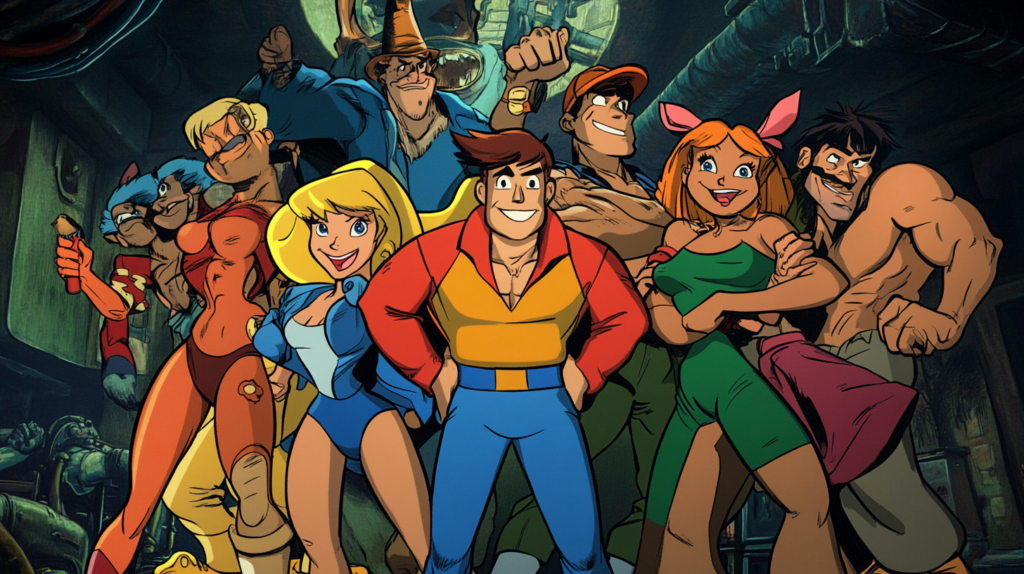
3. The Power of Nostalgia in Reboots
3.1 The Emotional Pull of Childhood Memories
For many fans, the original cartoon series represent a formative part of their upbringing. Hearing a familiar theme song or seeing a cherished character can trigger memories of family gatherings, carefree weekends, and simpler times. This emotional connection is the cornerstone of the nostalgia factor, making the reintroduction of a classic series a highly anticipated event. Reboots that effectively tap into these memories can create a strong sense of continuity, giving viewers the comfort of revisiting their past.
3.2 Visual and Musical Cues
Visual styles and soundtracks are powerful conveyors of nostalgia. Classic cartoons are often remembered for their distinct art styles, voice acting, and memorable musical scores. A reboot that retains these elements while updating certain aspects can evoke a deep sense of familiarity. For instance, maintaining the signature character designs or the original theme song—even if slightly remixed—can remind audiences of why they fell in love with the show in the first place.
3.3 Marketing and Fan Expectations
The success of any reboot hinges on understanding and managing fan expectations. When a studio announces a revival, the fan community is already buzzing with anticipation. Social media platforms are filled with discussions, fan art, and remembrances of the original series. Marketers often leverage these sentiments by using promotional materials that evoke the visual and auditory memories of the past. However, this reliance on nostalgia also poses a risk: if the reboot does not live up to the sentimental expectations, it can lead to disappointment and backlash.
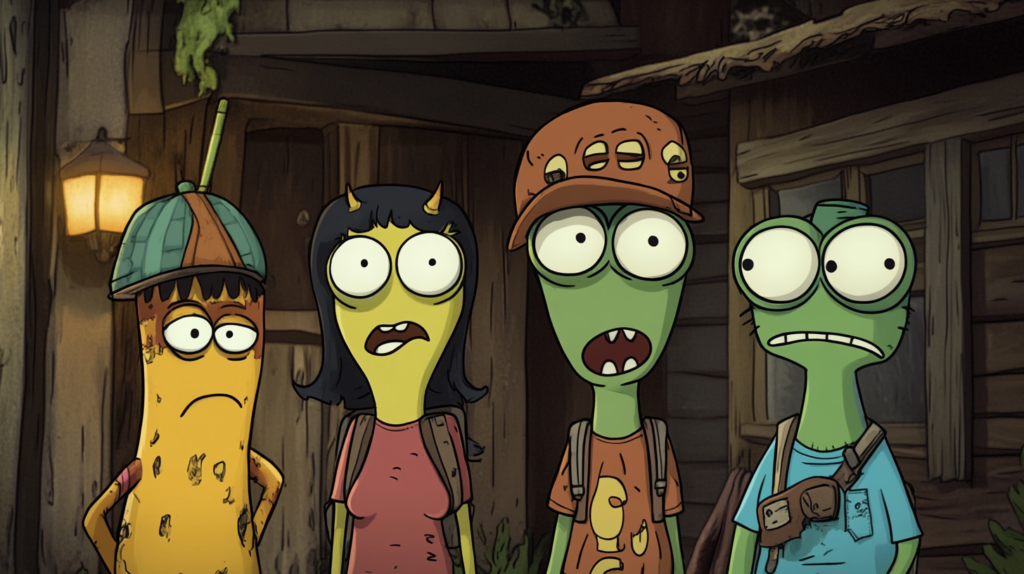
4. Innovation: Breathing New Life into Old Classics
4.1 Embracing Modern Animation Techniques
Advancements in technology have dramatically changed the animation landscape. Digital tools now enable studios to produce higher-quality visuals, dynamic camera movements, and more intricate character designs. Modern reboots often incorporate 3D animation, enhanced color palettes, and high-definition detail that can elevate the storytelling experience. This innovation can offer a fresh look while still paying tribute to the original style, providing a visual feast for both longtime fans and newcomers.
4.2 Contemporary Storytelling and Themes
Today’s animated series are not bound by the limitations of their predecessors. Reboots often update storylines to reflect current societal values, address modern issues, or explore character development in greater depth. This shift allows reboots to resonate with a broader audience. Instead of simply rehashing old plots, innovative reboots introduce new subplots, complex relationships, and moral dilemmas that add layers to the narrative. By doing so, they invite viewers to reconsider what they once thought they knew about the characters.
4.3 Redefining Character Roles
One of the most significant changes in modern reboots is the reexamination of character roles. Creators now have the opportunity to expand on backstories, motivations, and relationships that were only hinted at in the original series. This reevaluation can turn supporting characters into central figures or even reframe a traditional villain into a more sympathetic anti-hero. Such nuanced portrayals challenge viewers to engage with characters on a deeper level, making the reboot not just a nostalgia trip but also an exploration of evolving social norms.
4.4 Integrating Humor and Satire
Innovation in reboots also comes through the use of humor and satire. Modern creators often include meta-commentary on the very idea of reboots, acknowledging the trend with self-aware jokes and parodies. This playful approach can bridge the gap between old and new by showing respect for the source material while also poking fun at it. The result is a series that entertains on multiple levels—honoring the original while also engaging a contemporary audience that appreciates wit and irony.
5. Case Studies: Successful and Controversial Reboots
5.1 A Classic Reimagined: The Revival of “DuckTales”
The 2017 reboot of DuckTales serves as an excellent example of balancing nostalgia and innovation. The original series, which debuted in the late 1980s, was cherished for its adventurous spirit and memorable characters. In the reboot, creators maintained the core essence of the characters—Scrooge McDuck, Huey, Dewey, and Louie—but introduced updated animation techniques, richer storylines, and a darker, more serialized narrative. This approach allowed the show to appeal to both older fans, who appreciated the callbacks to the original, and a new generation of viewers looking for more sophisticated storytelling.
5.2 Controversy in Reboots: The Case of “Teenage Mutant Ninja Turtles”
Reboots can be polarizing, as demonstrated by various iterations of Teenage Mutant Ninja Turtles. While some reboots have been praised for injecting fresh humor and addressing contemporary issues, others have been criticized for straying too far from the original formula. Fans who grew up with the classic series often feel a strong attachment to its unique tone and style. When a reboot diverges significantly—whether by changing character dynamics, altering visual aesthetics, or shifting thematic focus—it risks alienating its core audience. This tension highlights the delicate balance between innovation and staying true to the source material.
5.3 Reboots in Anime: Bridging Old and New
Anime has also seen its share of reboots, where longstanding franchises are revitalized for new audiences. Series like Yu-Gi-Oh! and Sailor Moon have been revisited with updated animation and contemporary narratives. In these cases, the challenge lies in preserving the original charm that made the series a phenomenon while also modernizing it to meet current viewer expectations. Successful reboots in anime often involve close collaboration with original creators, ensuring that new episodes capture the spirit of the original series even as they explore new narrative possibilities.
5.4 When Nostalgia Fights Back: Fan Reactions and Online Debates
Not every reboot is met with open arms. Social media platforms are rife with passionate debates over what constitutes a faithful reboot versus a cash grab. Fans often take to forums and comment sections to express their disappointment or excitement, comparing new episodes to the beloved originals. These discussions are not just about preferences; they reflect deeper concerns about cultural preservation and the commodification of childhood memories. In many ways, these debates underscore the powerful role that nostalgia plays in how we consume media.
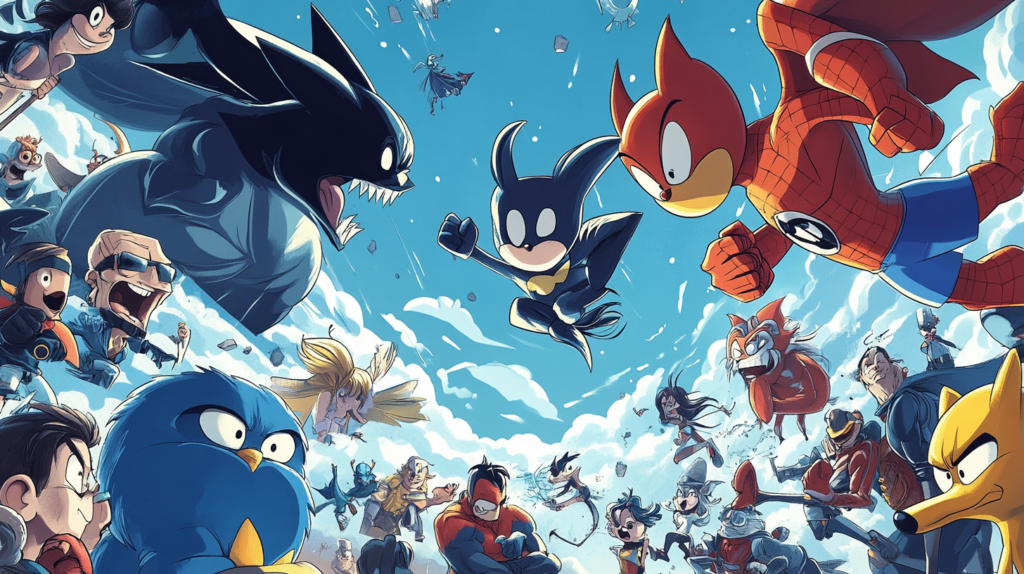
6. The Creative Process Behind a Reboot
6.1 Research and Inspiration
Creating a successful reboot begins with thorough research. Studios study the original series—its visual style, narrative structure, character dynamics, and even its soundtrack—to identify the elements that resonated with audiences. This process involves revisiting old episodes, conducting interviews with original creators, and analyzing fan feedback. By understanding what made the original special, modern creators can decide which aspects to preserve and which to reinvent.
6.2 Collaborative Brainstorming
Reboot projects are inherently collaborative endeavors. Writers, animators, directors, and producers come together to brainstorm ideas that honor the original material while introducing fresh perspectives. During these sessions, every team member contributes insights that can lead to innovative storytelling techniques. For example, a discussion might reveal that a minor character from the original series has untapped potential, prompting a subplot that adds depth to the overall narrative.
6.3 Balancing Old and New
One of the most challenging aspects of rebooting a cartoon is achieving the right balance between nostalgia and innovation. Creators must decide which elements are non-negotiable—such as iconic character designs or memorable catchphrases—and which parts can be updated for modern audiences. This balance requires careful consideration and often involves multiple rounds of feedback from both internal teams and focus groups. The goal is to create a product that satisfies longtime fans while still feeling fresh and relevant.
6.4 Visual and Audio Redesign
Advancements in technology mean that reboots can benefit from state-of-the-art visual and audio techniques. Modern animation software enables smoother motion, richer colors, and more detailed character expressions. Similarly, updated soundtracks and improved voice acting contribute to a more immersive experience. However, creators often retain familiar audio cues—such as theme songs or signature sound effects—to maintain a connection with the original series. This combination of updated visuals and familiar audio elements helps bridge the gap between past and present.
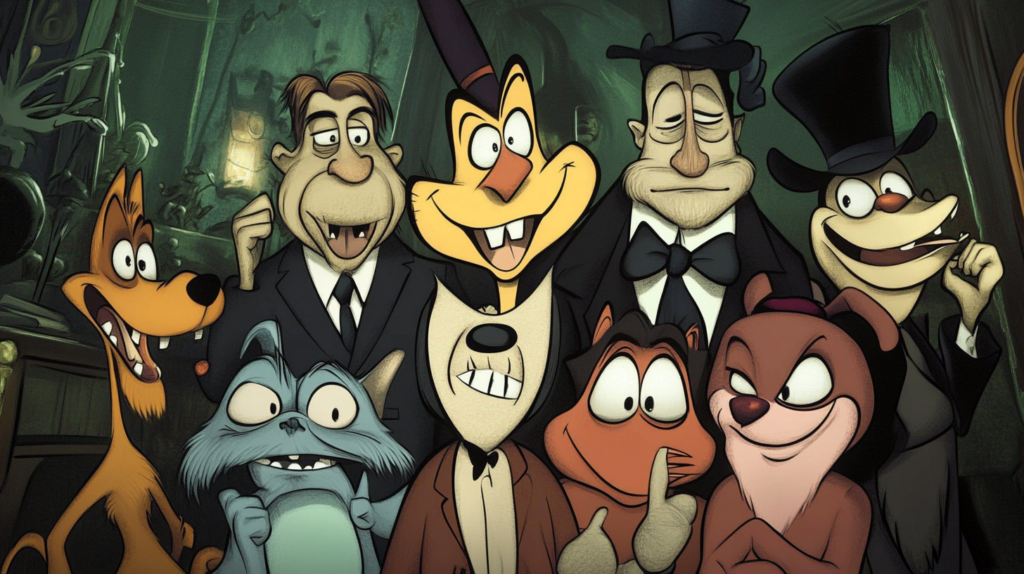
7. Nostalgia: A Double-Edged Sword
7.1 The Strength of Familiarity
Nostalgia has a unique power to evoke strong emotions. For many viewers, rewatching a favorite cartoon is a way to relive happy memories from their youth. Familiar characters, catchphrases, and settings provide a sense of comfort and continuity. When a reboot successfully taps into these familiar elements, it creates an immediate bond with the audience. This emotional pull can be a major factor in the commercial success of a reboot.
7.2 The Risk of Over-Reliance
However, an overemphasis on nostalgia can be risky. If a reboot relies too heavily on references and callbacks, it may feel stagnant or unoriginal. Audiences today expect not just a rehash of old ideas but a fresh take that adds new dimensions to the story. A reboot that fails to innovate may be dismissed as a mere repackage, unable to capture the imagination of both longtime fans and new viewers.
7.3 Striking the Right Chord
The key to a successful reboot lies in striking the right chord between honoring the past and embracing new ideas. This means integrating elements that evoke nostalgia without letting them overshadow the creative potential of the new work. When reboots manage this delicate balance, they can become powerful cultural touchstones that resonate across generations.
8. Innovation: Driving the Future of Animated Reboots
8.1 New Storylines and Character Development
Innovation in cartoon reboots is often marked by a willingness to expand on the original narrative. Modern reboots explore character backstories, interpersonal conflicts, and moral dilemmas that were only hinted at in earlier versions. This additional depth not only enriches the storytelling but also makes the characters more relatable. Viewers get to see familiar faces in a new light, with motivations and internal conflicts that challenge simple definitions of good and evil.
8.2 Technological Advancements in Animation
Today’s reboots benefit from significant advances in animation technology. High-definition digital animation, 3D modeling, and advanced rendering techniques offer a visual quality that far surpasses the hand-drawn styles of earlier decades. These improvements allow reboots to be visually stunning while preserving the charm of the original series. Enhanced sound design and updated musical scores further contribute to a polished, immersive experience that appeals to modern sensibilities.
8.3 Embracing Contemporary Themes
Innovation also means addressing themes that resonate with today’s audience. Modern reboots frequently tackle issues such as diversity, environmental sustainability, and social justice—subjects that may not have been prominent in the original series. By integrating contemporary themes, reboots can remain relevant and spark meaningful discussions among viewers. This approach not only broadens the appeal of the show but also reflects the evolving values of society.
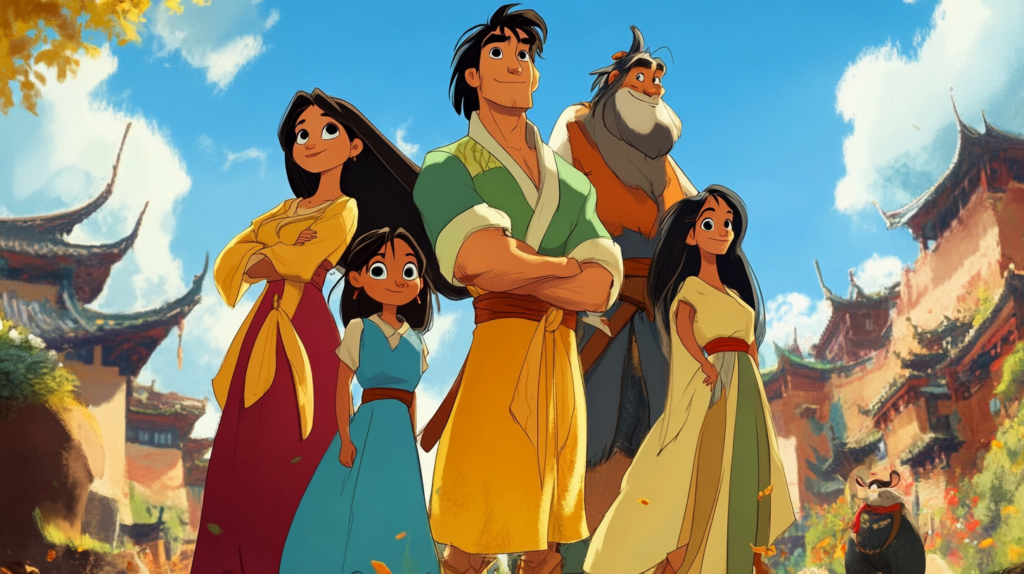
9. Fan Reactions: The Battle Between Old and New
9.1 The Power of Social Media
Social media platforms have become crucial arenas where fans express their opinions about cartoon reboots. Platforms like Easybie, Cartoonist Network, Twitter, Instagram, and Reddit buzz with discussions that can make or break a reboot. Fans share nostalgic memories of the original series while scrutinizing every change in the new version. The immediate feedback and passionate debates provide valuable insights for creators and often influence subsequent revisions.
9.2 Celebrating the Old, Embracing the New
Some fans appreciate reboots that honor the legacy of their childhood favorites, while others champion the new creative directions taken by the updated versions. This diversity of opinion is a testament to the complex relationship viewers have with nostalgia. For some, a reboot is a chance to relive cherished memories; for others, it is an opportunity to experience something innovative that challenges their expectations. Striking the right balance between these perspectives is key to satisfying a broad audience.
9.3 Online Communities and Fandom
Dedicated fan communities play an important role in shaping the narrative around cartoon reboots. These groups engage in vibrant discussions, create fan art, and even produce fan fiction that expands on the reboot’s universe. The passion and creativity of these communities can drive the popularity of a reboot, while also holding creators accountable to the legacy of the original series. The interplay between fans and producers has become a defining feature of the modern media landscape.
10. Marketing Strategies: Leveraging Nostalgia and Innovation
10.1 Campaigns That Evoke Emotion
Marketing for a cartoon reboot must navigate the delicate line between nostalgia and innovation. Successful campaigns often highlight familiar elements that evoke fond memories while teasing new, exciting aspects of the series. Trailers, posters, and social media content are carefully crafted to capture the attention of both longtime fans and potential new viewers. A well-executed marketing strategy can build anticipation and create a buzz that spans generations.
10.2 Cross-Promotions and Collaborations
Collaborations with other media franchises and pop culture icons can also help reboots reach a wider audience. Cross-promotions that celebrate the original series—through merchandise, special events, or cameo appearances in other shows—reinforce the connection to the past. Simultaneously, partnerships with contemporary brands or influencers can signal that the reboot is ready to meet today’s audience on their own terms.
10.3 The Role of Streaming Platforms
The rise of streaming platforms has transformed how animated content is distributed and consumed. These platforms provide an ideal environment for reboots, offering immediate global reach and the flexibility to experiment with new formats. With vast libraries of both classic and modern content, streaming services enable reboots to coexist with their original counterparts, allowing viewers to compare and contrast. This accessibility plays a crucial role in building momentum and reaching a diverse audience.
11. International Perspectives: Reboots Around the Globe
11.1 Cultural Adaptations
Cartoon reboots are not limited to American animation. Studios around the world are reimagining beloved series to reflect local cultural sensibilities. These international adaptations often incorporate unique art styles, humor, and narrative approaches that resonate with regional audiences. By blending global influences with local traditions, these reboots create a rich tapestry that celebrates diversity while still appealing to fans of the original.
11.2 Success Stories from Overseas
Several international reboots have garnered acclaim both at home and abroad. For example, Japanese anime has a long history of reimagining classic series with updated animation and storytelling. These reboots not only preserve the original spirit but also infuse it with modern sensibilities that attract new viewers. Such success stories demonstrate that the balance between nostalgia and innovation is a universal challenge that transcends borders.
11.3 Challenges of Global Distribution
While international reboots offer exciting opportunities, they also face unique challenges in global distribution. Language barriers, cultural differences, and varying viewer expectations can complicate marketing and reception. Nonetheless, the universal language of animation and music often helps bridge these gaps, allowing reboots to resonate with audiences worldwide.
12. Behind the Scenes: Interviews with Creators
12.1 Insights from Writers and Directors
Many of the minds behind successful reboots have shared their experiences in interviews. They discuss the challenges of reinventing a beloved series, the importance of staying true to the original spirit, and the creative decisions that drive innovation. These behind-the-scenes stories reveal a process marked by careful planning, collaboration, and a willingness to take creative risks. Creators emphasize that listening to fan feedback is crucial, yet they also strive to bring fresh perspectives that push the narrative into new territory.
12.2 Perspectives from Voice Actors
Voice actors contribute immensely to the success of a reboot by reinterpreting familiar characters. Their performances can bridge the gap between nostalgia and new storytelling. In interviews, many voice actors speak about the pressure of living up to the legacy of the original series while also bringing their own nuances to the role. Their insights offer a unique look at how vocal performances can enhance character depth and transform a reboot into a dynamic, engaging experience.
12.3 Stories from the Animation Studio
Behind every successful reboot is a dedicated team of animators, sound designers, and production staff. Interviews with these professionals reveal the evolution of technology and techniques that have enabled reboots to achieve higher levels of quality. They discuss the challenges of updating traditional hand-drawn animation for a digital age and how modern tools allow for greater detail and emotional expression. These narratives showcase the passion and ingenuity that drive the animation industry forward.
13. Challenges and Criticisms: When Reboots Fall Short
13.1 The Pitfalls of Over-Reliance on Nostalgia
One of the most common criticisms of cartoon reboots is that they lean too heavily on nostalgia. When a reboot focuses excessively on reproducing the original’s look and feel, it risks coming off as a mere rehash rather than a meaningful update. Critics argue that such projects fail to offer fresh perspectives or address modern themes, rendering them redundant for newer generations. Balancing nostalgic elements with innovative storytelling is essential to avoid this pitfall.
13.2 Balancing Fan Expectations and Creative Freedom
Another challenge is reconciling the demands of dedicated fans with the creative freedom that modern storytelling allows. Fans who grew up with the original series often have strong opinions about what should remain unchanged. Meanwhile, creative teams may want to explore new ideas that do not align perfectly with fan expectations. This tension can lead to controversies and divided opinions about whether the reboot honors its roots or strays too far from what made the original special.
13.3 Critical and Commercial Reception
The reception of reboots can vary dramatically. While some are embraced as clever reinterpretations that breathe new life into classic material, others face harsh criticism for failing to innovate or for altering beloved characters beyond recognition. Box office performance, streaming numbers, and social media sentiment all serve as indicators of how well a reboot manages the delicate balance between past and present. These metrics often reflect broader cultural debates about the value of nostalgia versus the need for progress.
14. The Impact on the Animation Industry
14.1 Revitalizing Classic Franchises
Reboots have the potential to revive interest in classic franchises that might otherwise fade into obscurity. By reintroducing these properties to a new generation, studios can ensure that timeless characters and stories continue to thrive. This revival often leads to expanded merchandise lines, renewed interest in the original series, and even spin-offs that further enrich the animated universe.
14.2 Influencing New Content Creation
The success and challenges of cartoon reboots have a ripple effect on the animation industry as a whole. Studios take note of what resonates with audiences—whether it’s the blend of humor and drama, the updated visual style, or the way reboots incorporate modern themes—and apply these lessons to new projects. The creative risks taken in reboots can inspire original series that strike a similar balance between honoring tradition and pushing creative boundaries.
14.3 Shaping Industry Trends
The debate between nostalgia and innovation is not limited to cartoons; it is a recurring theme across all forms of media. The experiences and lessons learned from successful and unsuccessful reboots influence how creators approach new projects. This dynamic drives industry trends, leading to a richer, more diverse landscape of animated content that reflects both the past and the possibilities of the future.
15. Looking Forward: The Future of Cartoon Reboots
15.1 Embracing New Technologies
The future of cartoon reboots is bright, with emerging technologies offering new ways to tell stories. Virtual reality, augmented reality, and interactive media are beginning to influence animation, allowing viewers to engage with their favorite characters in immersive environments. These innovations promise to take reboots to new heights, blending traditional storytelling with cutting-edge technology.
15.2 Global Collaboration and Diverse Voices
As the animation industry becomes more interconnected globally, reboots are increasingly influenced by a diverse range of perspectives. International collaborations can bring fresh ideas to classic franchises, ensuring that reboots reflect a broader spectrum of cultural experiences. This diversity enriches the narrative and expands the audience, making animated content more inclusive and relatable.
15.3 Reinventing Nostalgia for a New Generation
While nostalgia will always play a significant role, future reboots must also reinvent familiar elements to suit modern tastes. This reinvention involves reinterpreting classic themes through contemporary lenses—be it through updated dialogue, modernized visual aesthetics, or fresh narrative structures. The challenge lies in preserving the essence of what made the original beloved while also offering something new and exciting for today’s viewers.
15.4 The Role of Streaming and Digital Platforms
Digital platforms and streaming services continue to reshape the animation landscape. With the flexibility to experiment with new formats and cater to niche audiences, these platforms are ideal for launching innovative reboots. The accessibility of digital content also allows for a global audience, ensuring that reboots can build a broad and diverse fan base.
16. Cartoon Reboots: Balancing Nostalgia and Innovation
Cartoon reboots sit at the intersection of memory and creativity. They offer an opportunity to honor the legacy of classic animated series while exploring new narrative possibilities that speak to today’s audiences. As we have seen, the journey of reboots is filled with both promise and challenges. On one hand, the emotional pull of nostalgia can provide a strong foundation for a reboot, rekindling cherished memories and maintaining a connection with fans. On the other hand, innovation is essential to ensure that the reboot resonates with a modern audience, offering fresh perspectives and updated storytelling that reflect contemporary values.
The evolution of cartoon reboots is a testament to the dynamic nature of animation as an art form. It shows how a beloved series can be reimagined and transformed through the collaborative efforts of writers, animators, voice actors, and directors. By carefully balancing the influences of the past with the possibilities of the future, creators can craft reboots that are both heartwarming and groundbreaking.
As technology advances and new cultural influences emerge, the future of cartoon reboots looks promising. Audiences can expect more daring experiments, richer storytelling, and more vibrant visuals that continue to push the boundaries of what animation can achieve. Whether you’re a lifelong fan of classic cartoons or a newcomer drawn to modern interpretations, there is much to look forward to as the industry evolves.
In essence, the debate between nostalgia and innovation is not about choosing one over the other but finding a harmonious blend that allows both to coexist. This balance enriches animated storytelling, making reboots a unique cultural phenomenon that appeals to the hearts and minds of viewers across generations.
Cartoon reboots remind us that while our memories of the past are precious, the creative spirit that drives innovation is equally important. They challenge us to appreciate the beauty of familiar tunes and characters while embracing the exciting potential of new ideas. As we continue to enjoy our favorite animated series—both old and new—we celebrate a vibrant legacy that connects us all through the magic of storytelling.
Ultimately, cartoon reboots are more than just remakes; they are reinventions that capture the essence of our shared history while forging a path into the future. They inspire us to remember where we came from and to look forward to where we are going. By balancing nostalgia with innovation, reboots can honor the traditions of the past while opening up exciting new worlds for us to explore—making them a lasting part of our cultural landscape.
This post was created with our nice and easy submission form. Create your post!



